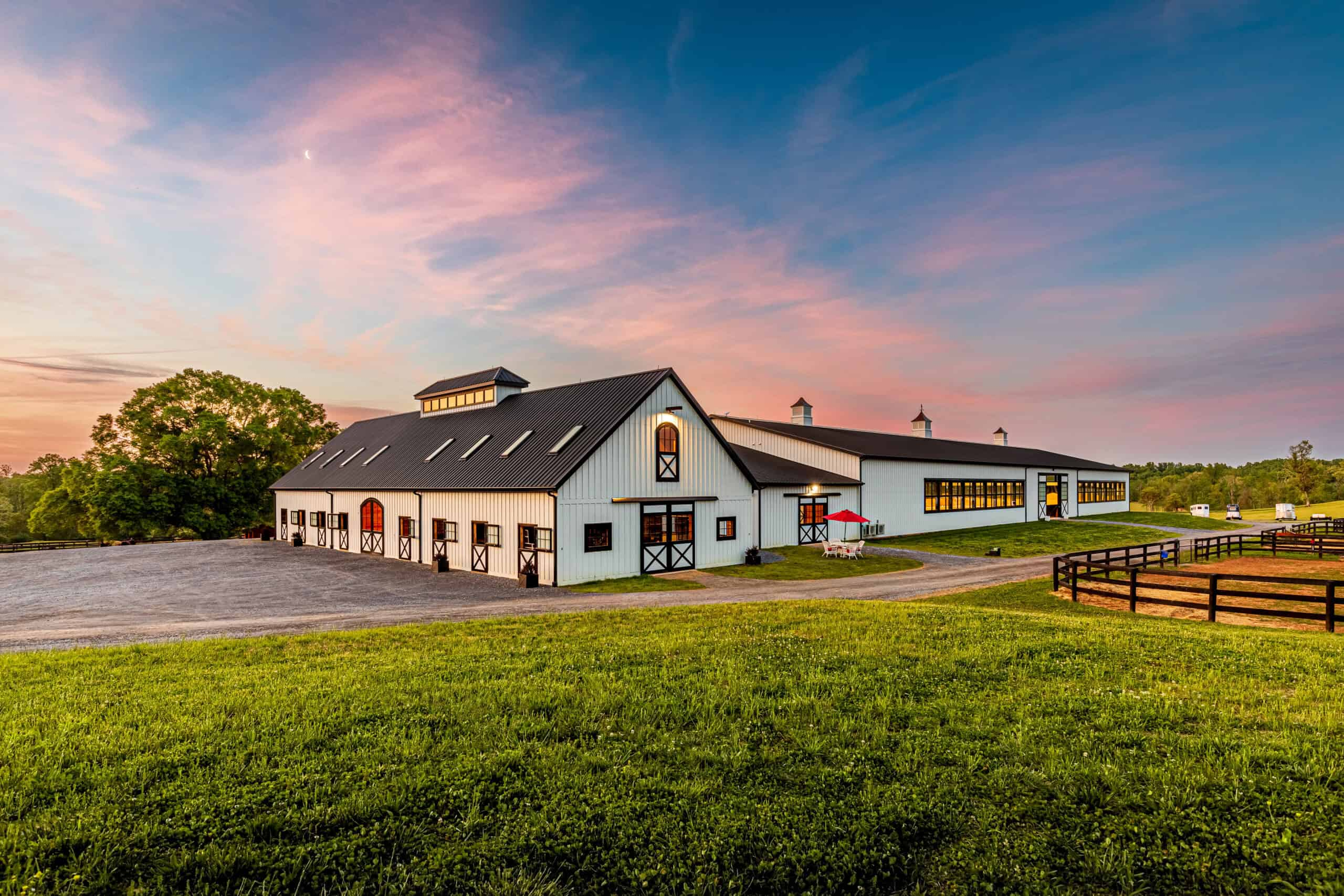
Keys to a Successful Barn Conversion Project
A successful barn conversion starts long before demolition day. It begins with a clear vision for the existing building, a realistic budget, and a plan that respects the barn’s original character while meeting modern standards for comfort, safety, and durability. Converting a barn is a fantastic way to give new life to existing agricultural buildings, but not all barns are ideal.
Barns typically were designed for agricultural purposes, not people, so the right direction comes from understanding what the barn is, where the barn sits, and how its structure and setting can support your goals.
Vision, Fit, and First Principles
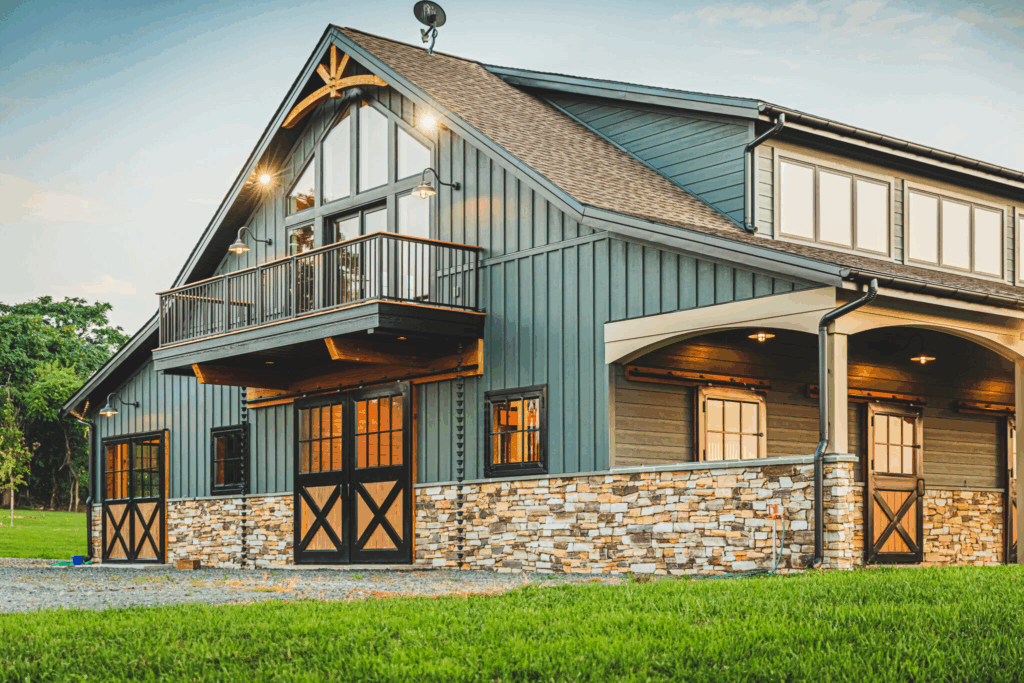
A barn conversion works best when the purpose is defined up front. The best barn conversions preserve the barn’s character and rustic charm while creating light, well-organized rooms that function day to day. Think about how an open plan layout might adapt over time, where storage space belongs, and how the program (kitchen, dining room, bedrooms, bathrooms) relates to original openings and high ceilings.
Location matters. A barn in open countryside may face different planning permission requirements than one near a village center. Estate agents can help you read local demand and comparable values, but planning authorities and the local planning authority (or other local authorities) will shape what is permitted development, what requires a planning application, and what happens if the barn is a listed building. Early clarity keeps the project moving and avoids rework.
Due Diligence: Survey, Structure, and Regulations
Understand the existing structure
Have the building surveyed before design begins. Document the existing structure and its condition. Review existing exterior walls, roof space, and foundations. Note original openings such as barn doors and narrow ventilation slits, plus any whole-wall movement or settlement. Many barns include long spans and slender members; a structural engineer should confirm how loads travel and what reinforcement will be required when the use changes.
Planning permission and building regulations
Converting barns triggers compliance obligations. Start early with the local planning authority to understand permitted development pathways, listed-building constraints, and documentation needed to submit a complete planning application. Building regulations will affect insulation, airtightness, egress, stairs, fire strategy, and door openings. Most barns will need careful consideration to reach modern standards without erasing original fabric. Budget time and cost for approvals. Compliance is not an afterthought; it is critical to a successful barn.
Light, Layout, and Everyday Living
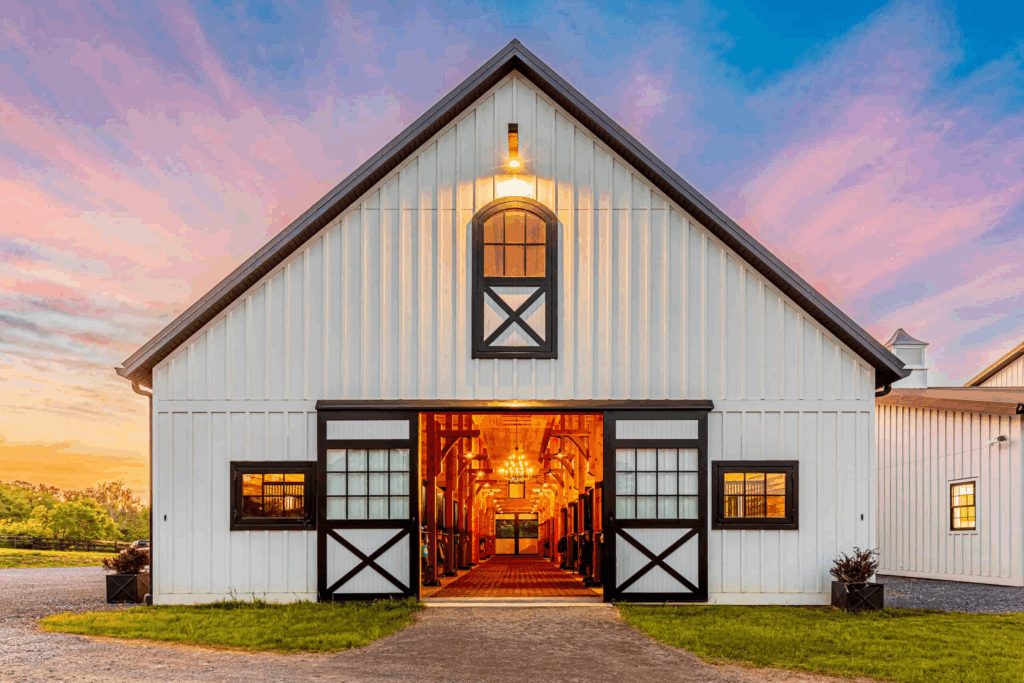
Bring in natural light without losing character
Barn interiors can be deep and dim. The goal is to bring light while protecting the barn’s original architecture. Roof lights can wash interiors with daylight while keeping elevations quiet. Where new window openings or large windows are appropriate, size and proportion them to the local vernacular and align with existing structure. Double glazed units improve comfort and efficiency; position them to frame views and avoid glare. Resist the urge to cut a whole wall of glass unless design, structure, and context truly support it.
Make space work for people
Open plan spaces help retain volume and the wow factor of exposed beams and high ceilings, but open plan needs zones to function. Organize the living space so circulation reads natural. Keep storage space near entries and service areas. In many barn conversions, original openings can become doors or screens that separate rooms without losing the sense of volume.
Preserve Original Features While Upgrading Performance
Keep what tells the story
Celebrate original features: exposed beams, pegged joints, stone walls, weathered cladding, and barn doors. These elements hold the building’s memory. Converting barns doesn’t mean hiding texture; it means highlighting it with measured, contemporary design that respects the original structure.
Meet modern standards carefully
Upgrades should apply sustainable design principles without overwhelming the fabric. Insulate and air-seal with respect for moisture movement through masonry or timber. Route services (electrical, plumbing, ventilation) where they do the least visual harm. Consider discreet solar panels if orientation and roof form make sense. Every intervention should balance performance with the barn’s character and natural beauty.
Openings, Additions, and Exterior Expression
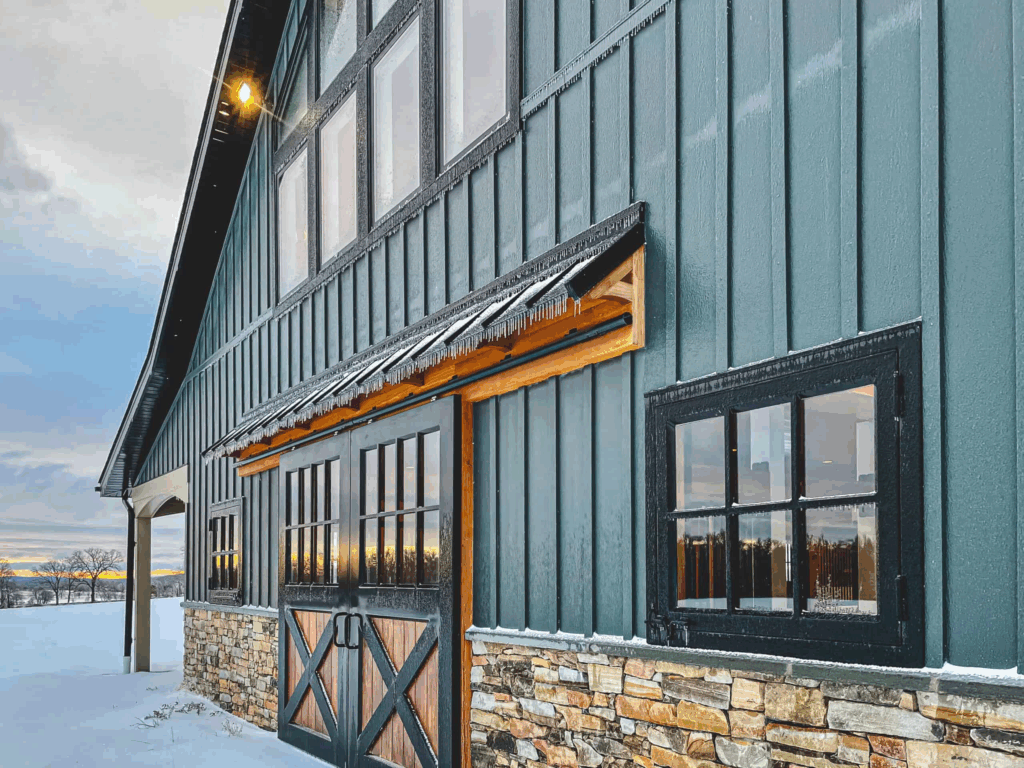
Design new openings with restraint
New openings are sometimes necessary, but they must look like they belong. Place window openings to align with structural bays; avoid cutting through primary members when possible. Compose any new openings so the façade reads coherent, not piecemeal. If a larger aperture is essential for access or light, use materials and details that echo the original architecture rather than mimicking a suburban house.
Respect the landscape and context
Exterior materials and colors should retain a dialogue with the local vernacular. In open countryside, siting paths, terraces, and parking with care helps the building settle into its setting. Thoughtful lighting protects dark skies and guides safe movement at night without turning the barn into a beacon.
Services, Systems, and Energy Strategy
Practical systems for comfort and durability
Comfort comes from more than insulation. Ventilation keeps indoor air healthy; airtightness reduces drafts; right-sized heating and cooling systems match the new enclosure. Design service routes early so ducts, pipes, and wiring do not compromise the structure or the look of exposed timbers. Keep plant rooms compact and accessible, and allow space for maintenance and future upgrades.
A few system planning reminders:
- Separate “clean” living areas from utility runs where possible.
- Protect timber and masonry at penetrations with proper flashing.
- Plan for fire and life-safety systems as part of the architecture, not add-ons.
Budget, Phasing, and Project Delivery
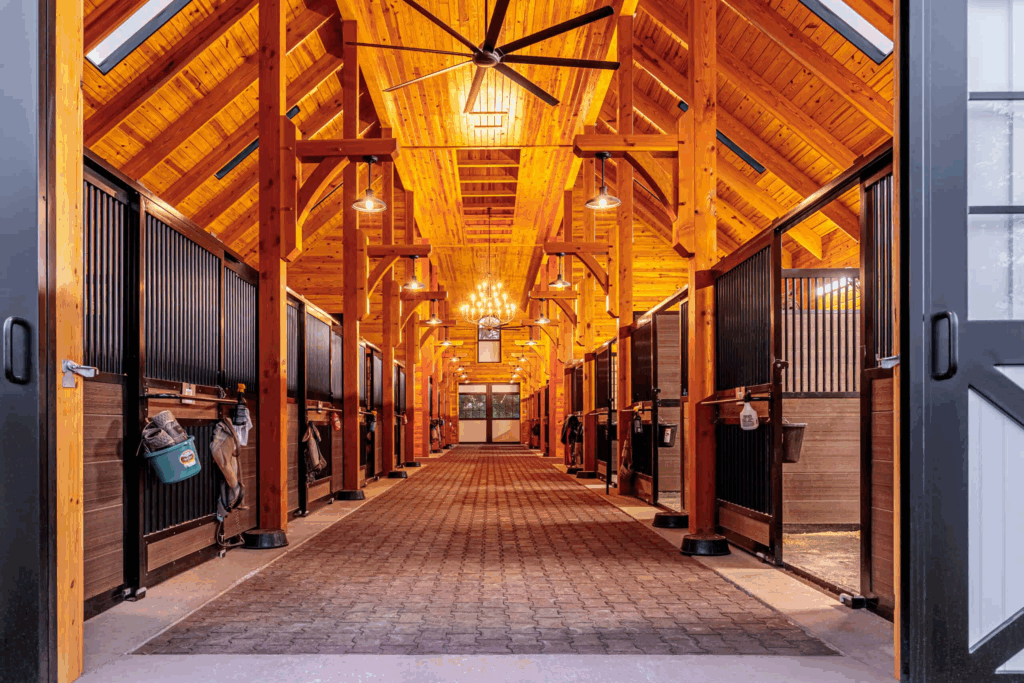
A realistic budget anticipates the unknowns of a renovation project. Typical cost drivers include structural reinforcement, envelope improvements, new openings, and interior fit-out. Phasing the work reduces risk to the original fabric. Transparent communication keeps expectations aligned when discoveries arise.
Core steps that keep converting a barn on track:
- Commission a measured survey and structural report before design lock-in.
- Map planning and building-regulation milestones with timelines.
- Price early details (insulation assemblies, windows, stairs) to protect the budget.
- Schedule critical path items, like steel for reinforcement and custom windows, well ahead of time.
Case-Style Planning Vignettes
Minimal-intervention family home
The existing building has strong bones and generous volume. The design keeps an open plan layout, adds carefully placed roof lights to bring light deep into the plan, and uses original openings for entry and garden access. New services are tucked into secondary spaces; exposed beams remain the visual hero.
Event-forward barn with a quiet exterior
Here, contemporary design supports circulation and code without shouting. A few new openings rationalize access; glazing is sized to the façade rhythm. Inside, high ceilings create a wow factor for gatherings while back-of-house rooms manage storage and prep. The exterior retains original cladding and color so the barn still reads as part of its landscape.
Getting Started on a Successful Barn Conversion
Success comes from aligning character, daylight, structure, and compliance into one coherent plan. Begin by having the building surveyed, then assemble an experienced architect, a structural engineer, and a builder who understand construction projects of this type. Engage the local planning authority early to confirm permitted development options, especially if the site is a listed building or sits in open countryside
With a realistic budget, a design that brings natural light while honoring original fabric, and a team that understands both regulations and craft, a successful barn conversion can turn an existing structure into an incredible home or a flexible community space, one that preserves the past and performs for life.

